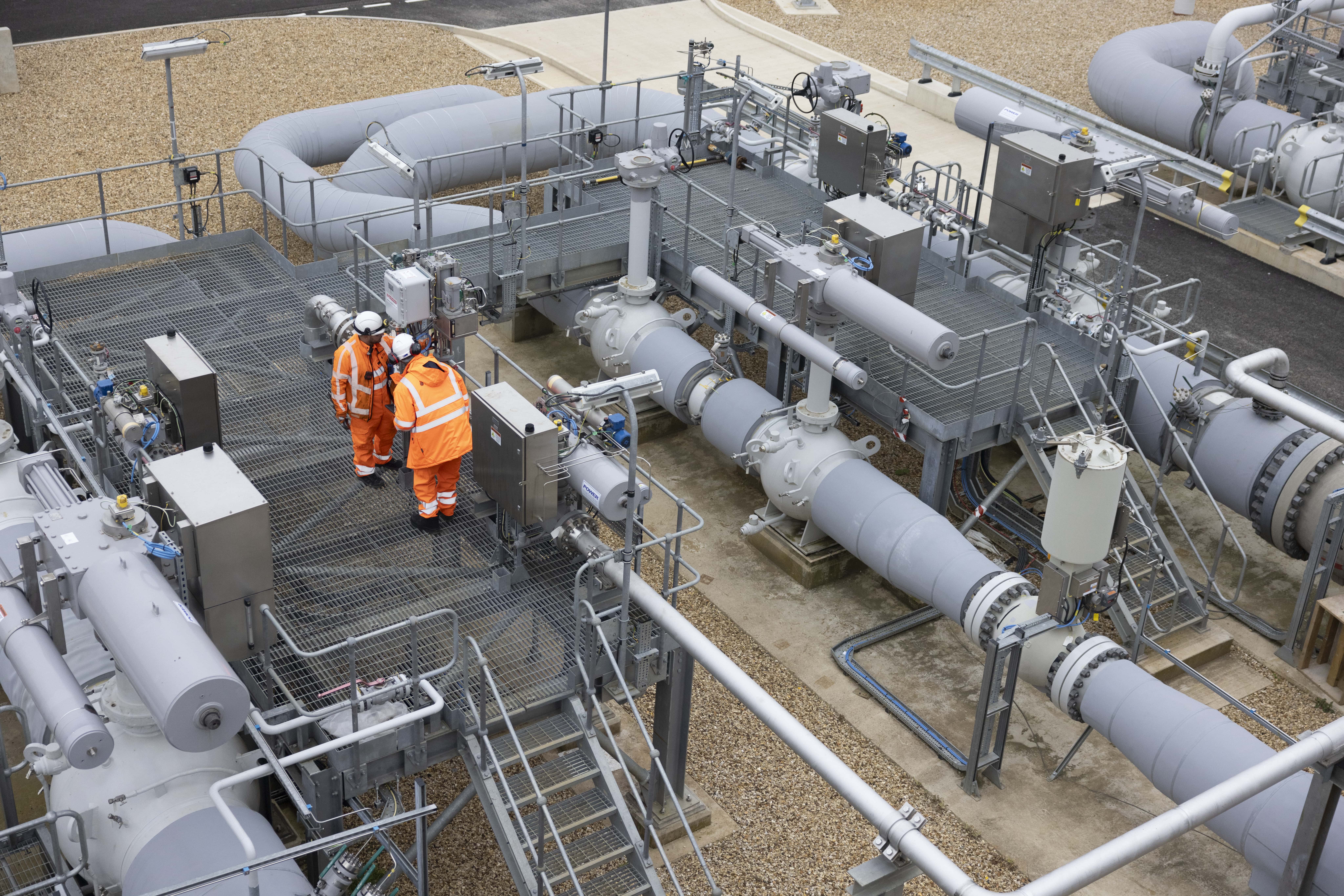24 JULY 2024
Ofgem Chair visits FutureGrid as we demonstrate Great Britain’s National Transmission System (NTS) is ready for hydrogen

National Gas’s world-leading FutureGrid project in Carlisle, England, has completed Phase 1 of testing, successfully demonstrating the potential of Great Britain’s gas National Transmission System (NTS) to transport blends of and 100% hydrogen.
To mark this milestone, Mark McAllister, Chair of Ofgem, visited the FutureGrid site on Tuesday 23 July, accompanied by our CEO, Jon Butterworth.
FutureGrid is our testing facility to demonstrate the transformative potential of transporting hydrogen in our gas transmission assets for use across the economy. During Phase 1, we tested hydrogen blending in a replica of the almost 5,000 miles of national transmission network, gradually increasing the hydrogen content from 2% to 100%. The results show that hydrogen blending and 100% hydrogen can play an important role in our energy system.
Jon Butterworth, CEO of National Gas, said:
“Green innovation is at the forefront of our minds as we look to the future of our energy system – solving the problem of reaching net zero while preserving our robust energy security.
“Today’s report presents a promising solution: hydrogen blending, which can help the government meet its ambition of making the country a clean energy superpower and all while using our existing infrastructure.
“We look forward to discussing the findings of phase one of this project with the government and working closely with them to drive forward hydrogen production across the UK, helping to deliver our net zero ambitions.”
At National Gas, we are committed to playing a pivotal role in the journey towards a clean energy future, and working with the government to produce further data on this important aspect of the energy transition.
Phase 2 of the FutureGrid project will address technical considerations such as compressing hydrogen using existing assets and purifying it for transportation, which is crucial for Britain to take a leading role on the global green stage.
You can read the full report here.





